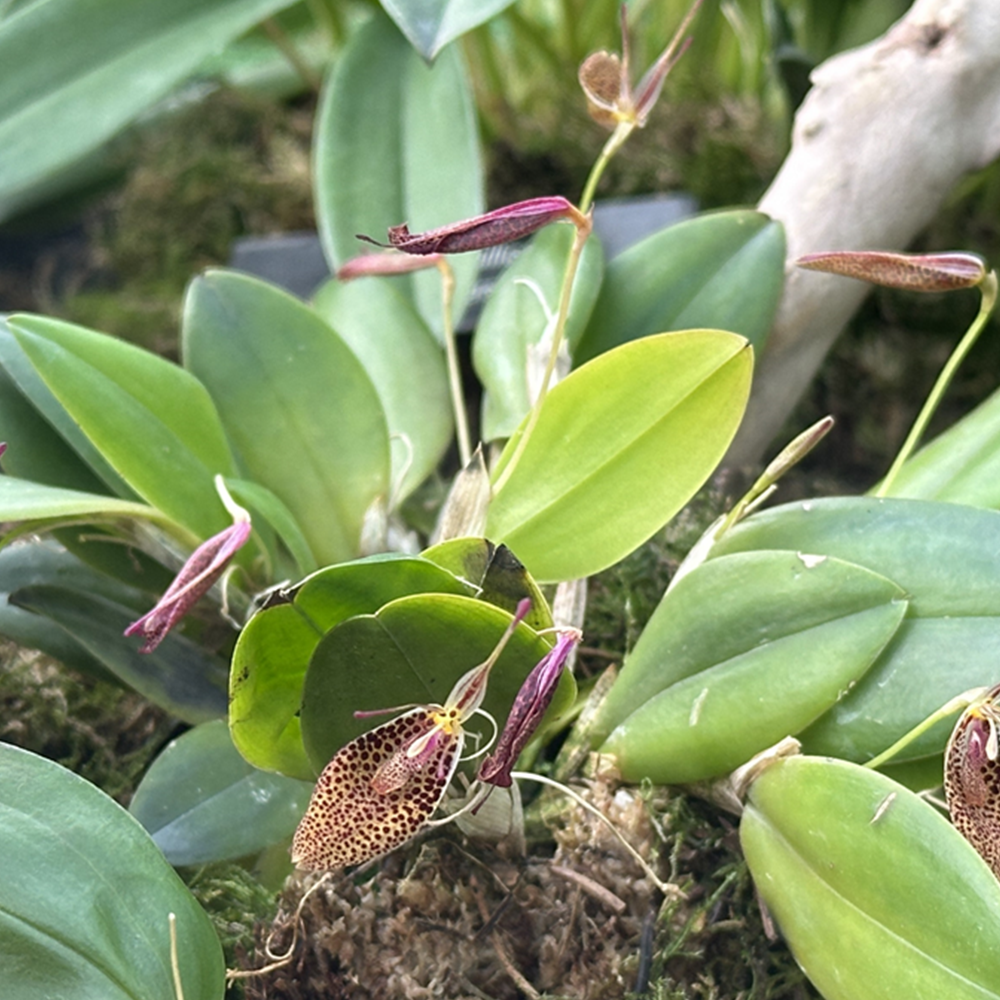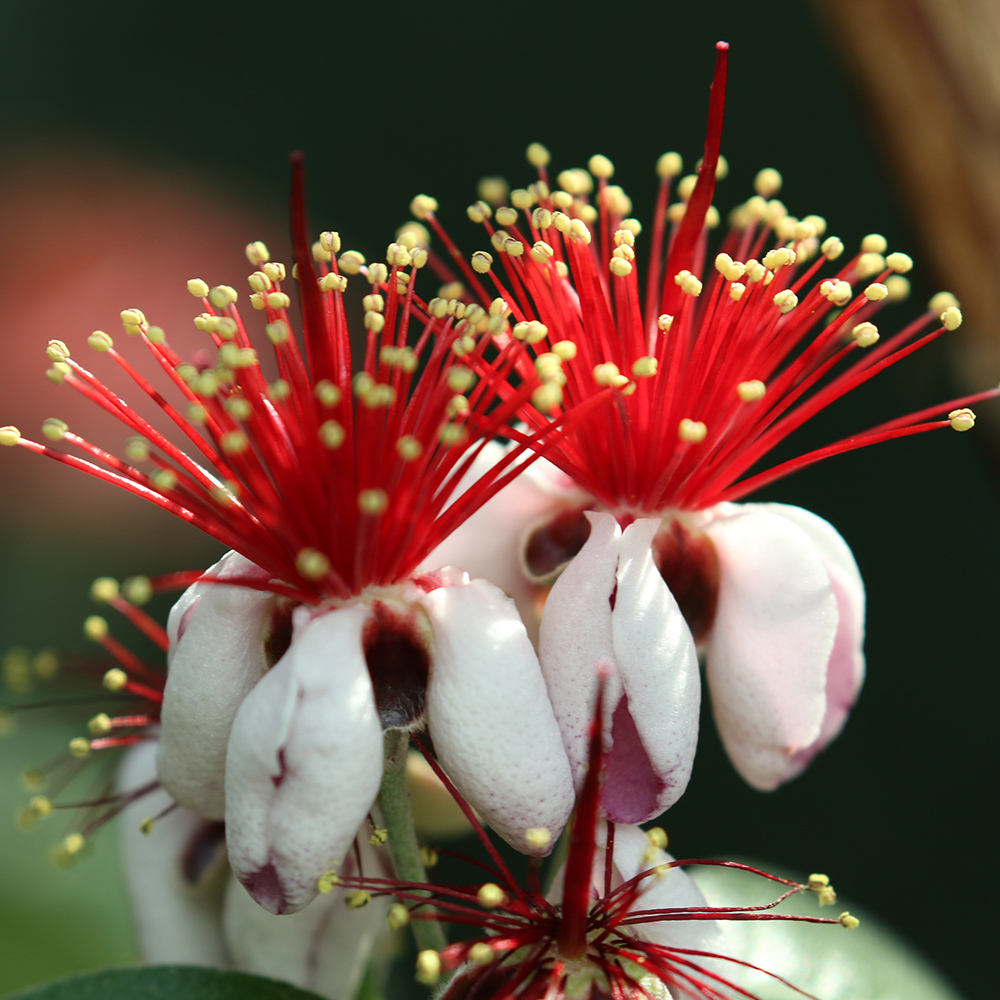Common Sunflower
(Helianthus annuus cultivars)
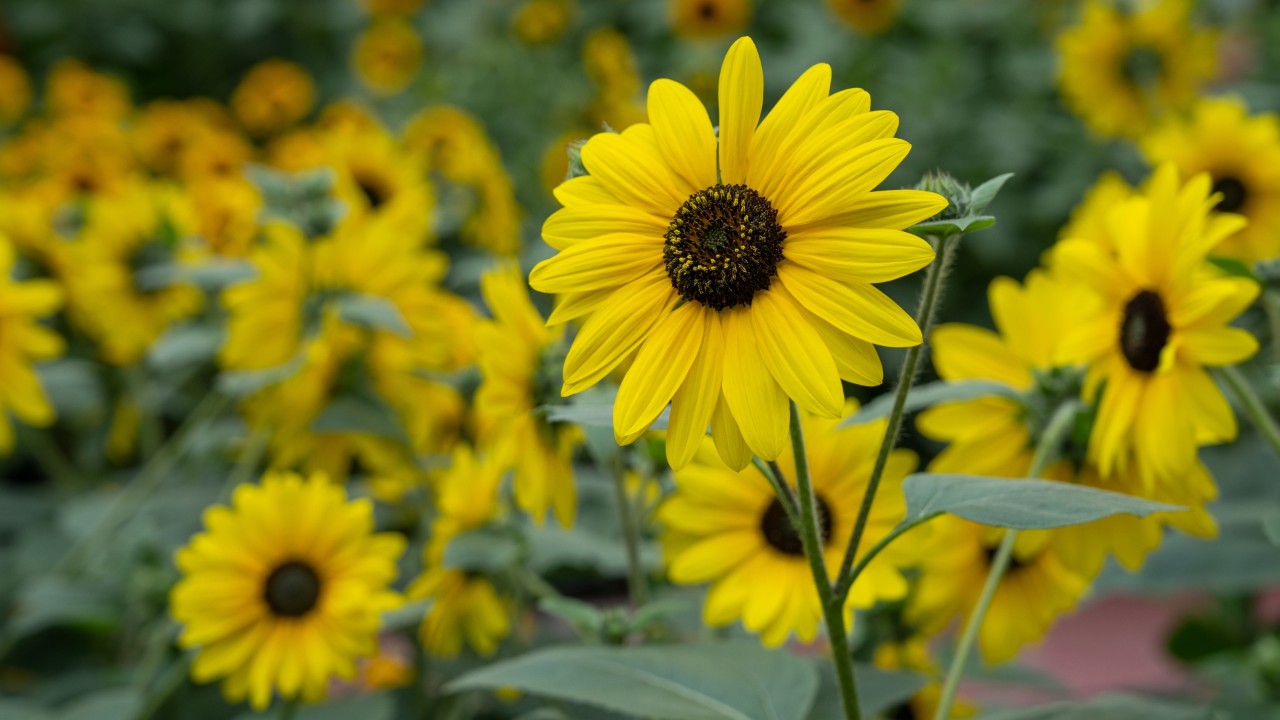
Helianthus annuus, commonly known as the common sunflower, is a popular flower that belongs to the aster family (Asteraceae). This is the same botanical family as other well-loved flowers, such as chrysanthemums, dahlias, and marigolds. Originally native to North America, this striking plant has successfully naturalised in many parts of the world. Today, it is cultivated not only for its beauty but also for its economic, ecological, and medicinal value, making it one of the most recognisable and cherished flowering species globally.
From an agricultural standpoint, the sunflower plays an important role as a major oilseed crop. It ranks fourth in global oil production, after oil palm (Elaeis guineensis and hybrids), soybean (Glycine max), and rapeseed (Brassica napus) oil. Sunflower seeds contain nutrients that are associated with antioxidant, antimicrobial, anti-inflammatory, antihypertensive, and cardiovascular benefits, as well as wound-healing properties, giving the plant value that extends beyond its ornamental appeal.
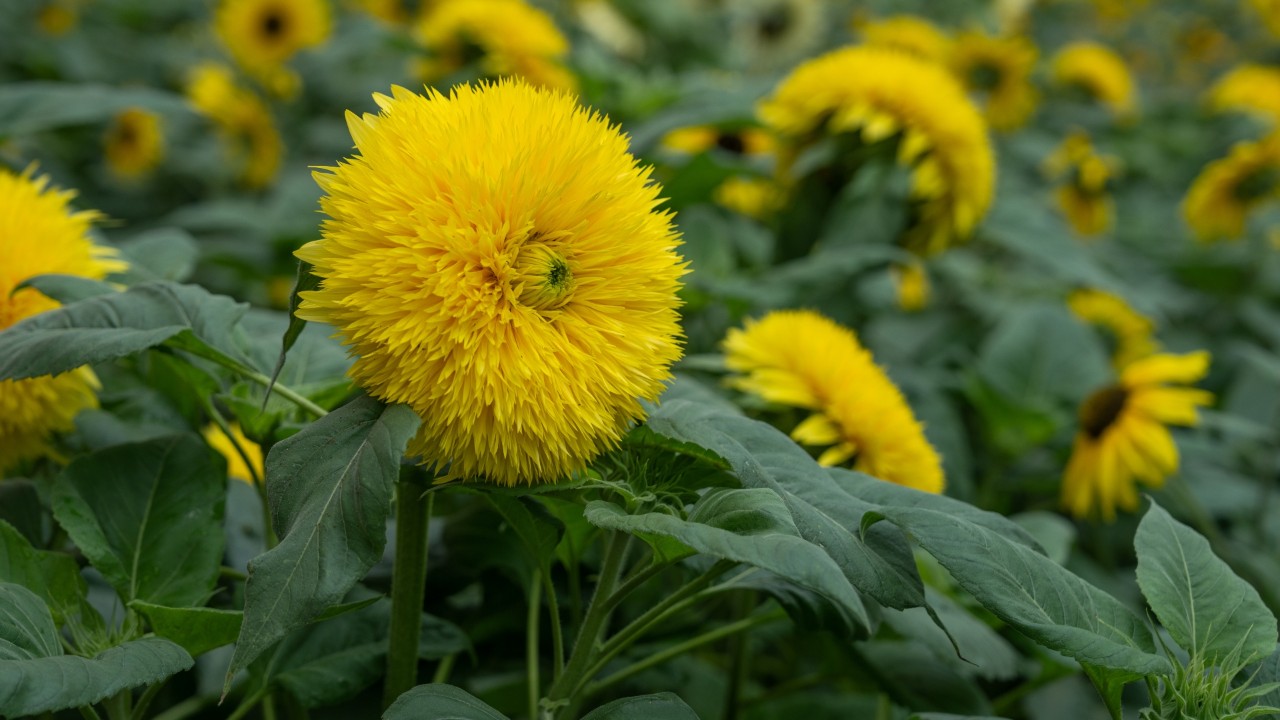 This year, our horticulturists grew over 1,500 sunflowers of 15 different varieties for the show!
This year, our horticulturists grew over 1,500 sunflowers of 15 different varieties for the show!
Botanically, the sunflower is an annual plant, completing its life cycle within a single growing season of three to six months. What appears to be a single large flower is a complex inflorescence known as a capitulum. This structure is made up of two kinds of simplified, miniature flowers called florets: ray florets and disc florets. Ray florets are bright, petal-like structures that surround the outer edge of the flower. They are sterile but play the role of attracting pollinators such as bees and butterflies. On the other hand, disc florets are found at the centre of the flower head and contain both the male (stamen) and female (pistils) reproductive organs, allowing for both self-pollination and cross-pollination. Some ornamental varieties are bred to produce sterile inflorescences made entirely out of ray florets. This creates a dense, pompom-like appearance, much like a supersized chrysanthemum flower!
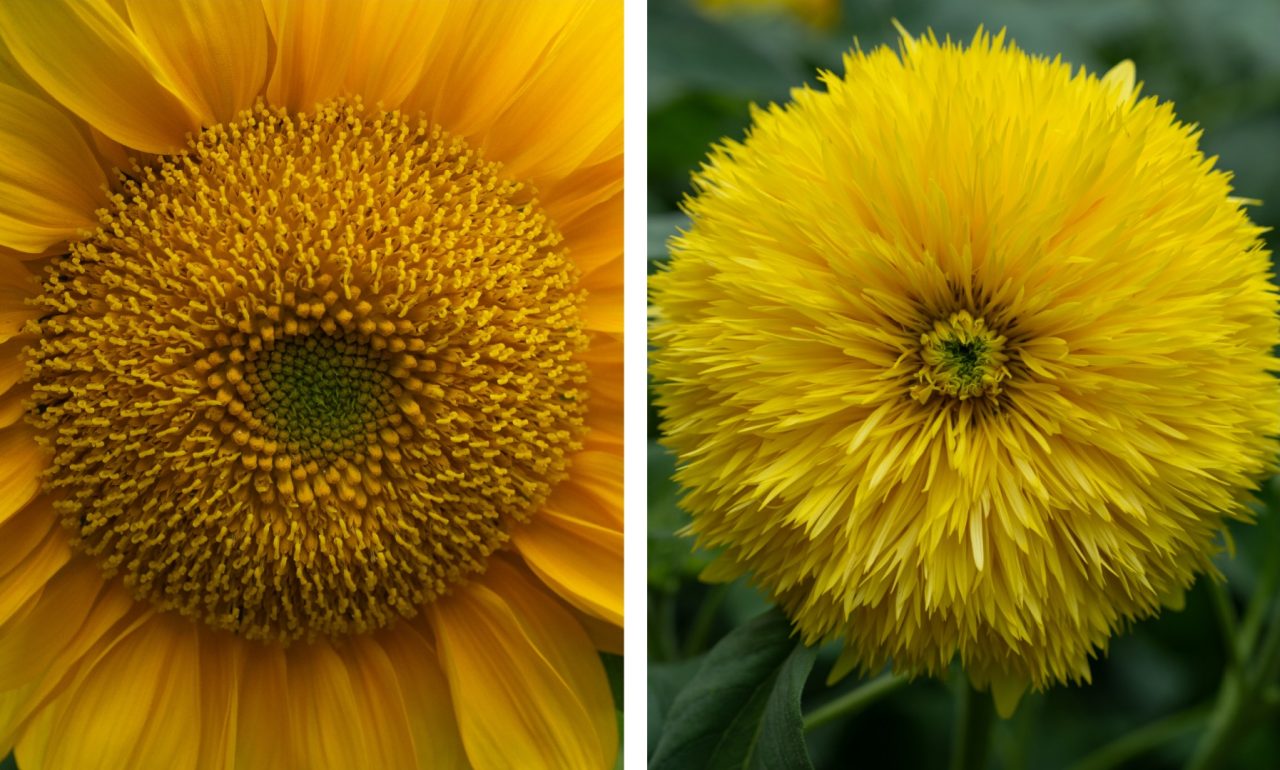 (Left) Helianthus annuus ‘Gold Lite’ is a cultivar whose flower head shows the typical compound inflorescence that is made up of both of outer ray florets and central disc florets. You can observe the hundreds of disc florets found in this single flower head. (Right) Helianthus annuus ‘Lemonade’ is a double petalled variety that is made up entirely of sterile ray florets. This makes the inflorescence completely sterile.
(Left) Helianthus annuus ‘Gold Lite’ is a cultivar whose flower head shows the typical compound inflorescence that is made up of both of outer ray florets and central disc florets. You can observe the hundreds of disc florets found in this single flower head. (Right) Helianthus annuus ‘Lemonade’ is a double petalled variety that is made up entirely of sterile ray florets. This makes the inflorescence completely sterile.
Sunflowers display remarkable variation in height, from compact cultivars as short as 20 centimetres to towering giants exceeding 5 meters. In this display, horticulturists have carefully selected cultivars across different height ranges, creating layers of visual interest that allow visitors to appreciate the flowers from multiple perspectives.
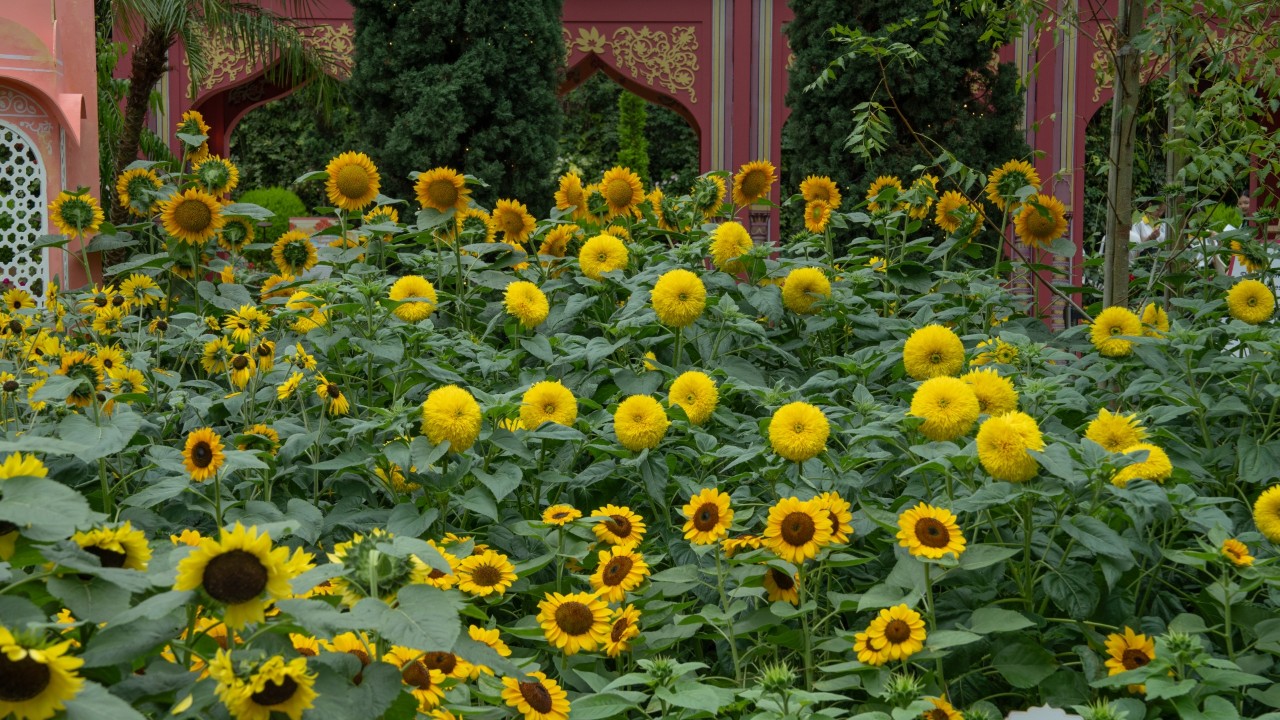 Sunflowers can grow to a wide range of heights depending on the variety and growing environment, and our horticulturists have carefully chosen diverse colours, forms, and sizes to create a rich and dynamic visual experience. The shortest sunflower in our display reaches just 20cm in height, while the tallest stands proudly at 1.8m!
Sunflowers can grow to a wide range of heights depending on the variety and growing environment, and our horticulturists have carefully chosen diverse colours, forms, and sizes to create a rich and dynamic visual experience. The shortest sunflower in our display reaches just 20cm in height, while the tallest stands proudly at 1.8m!
Sunflowers generally fall into two main growth habits: single-stem and branching varieties. Single-stem sunflowers grow tall and upright, producing one large, dominant inflorescence at the top of the stem. These cultivars are mainly grown in the the cut-flower industry as they are prized for their uniformity, strong stems, and dramatic presentation. In contrast, branching sunflowers develop multiple side stems that each bear smaller blooms, creating a fuller and more natural appearance. Branching types often have a longer flowering period, providing continuous color in the garden over several weeks. The choice between single and branching forms depends on their intended use—single stems for striking, solitary displays, and branching types for lush garden borders or prolonged seasonal interest. In this display, our designers have included a good mix of the two!
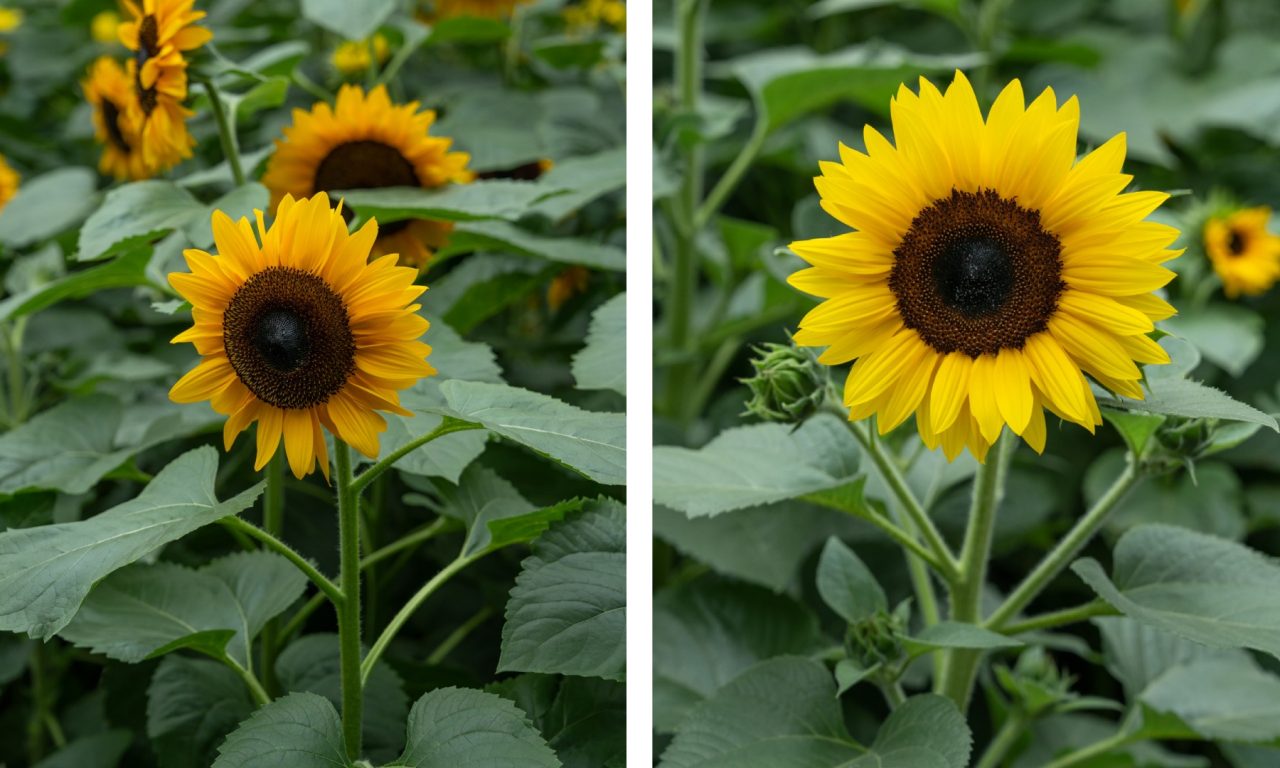 (Left) Helianthus annuus ‘ProCut Orange Excel: A single blooming variety that produces a large individual flower on a single tall stem. (Right) Helianthus annuus ‘Dancing Sun’: A branching variety that produces multiple secondary flowers off of its main stem. Can you find the small, green flower head buds?
(Left) Helianthus annuus ‘ProCut Orange Excel: A single blooming variety that produces a large individual flower on a single tall stem. (Right) Helianthus annuus ‘Dancing Sun’: A branching variety that produces multiple secondary flowers off of its main stem. Can you find the small, green flower head buds?
The colour palette of sunflowers extends far beyond the traditional golden hue. Modern breeding has introduced vibrant shades of orange, reddish, pink, and even soft pastels. Some of the unusually coloured sunflowers featured in Sunflower Surprise this year includes Helianthus annuus 'Chocolate' in rich brown tones, Helianthus annuus 'Strawberry Blonde' with a rosy central bullseye ring on pale yellow petals, Helianthus annuus ‘White Nite’ with pale white petals and contrasting dark centre, and Helianthus annuus 'Gold Lite' for classic golden blooms.
 Sunflowers are not always in shades of yellow. This year, we are featuring cultivars that range from chocolatey brown to hues of pink, red, and purple. There are even white sunflowers! From left to right: Helianthus annuus ‘White Nite’, Helianthus annuus ‘Strawberry Blonde’, front and back of Helianthus annuus ‘Chocolate’
Sunflowers are not always in shades of yellow. This year, we are featuring cultivars that range from chocolatey brown to hues of pink, red, and purple. There are even white sunflowers! From left to right: Helianthus annuus ‘White Nite’, Helianthus annuus ‘Strawberry Blonde’, front and back of Helianthus annuus ‘Chocolate’
Don’t miss this chance to catch the wide variety of sunflowers on display in Flower Dome from now to 16 November 2025! If you’re looking for fun activities this Saturday, come to Flower Dome from 2-5pm to experience our Sensory Moments programme where you’ll get to see, touch, smell, and learn more about the hidden secrets of sunflowers! Find more information on Sensory Moments Sunflower Surprise here!
Written by: Sharifah Osman, Senior Manager (Research and Horticulture)
As an avid flora photographer, Sharifah is consistently curious about the natural world that surrounds her. So much so that she eventually pursued a career in horticulture while dabbling in botanical art and photography during her free time.
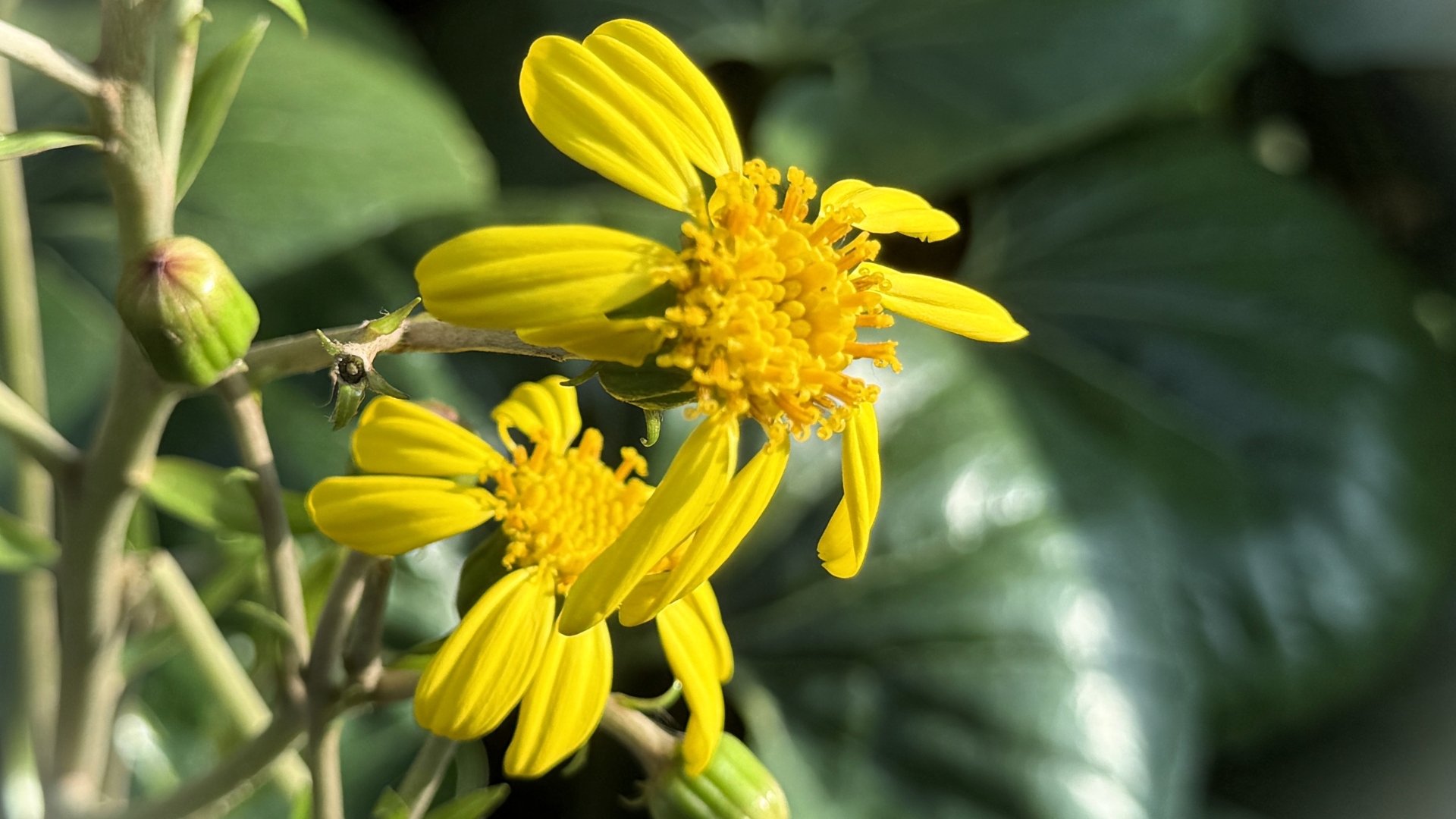
/1000x1000-thumb-pride-of-burma-1.jpg)
